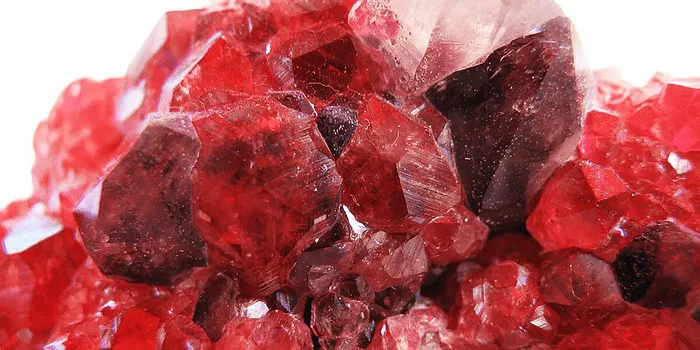Garnet, a striking and versatile gemstone, has long captivated both enthusiasts and experts with its rich colors and multifaceted applications. From deep reds to vibrant greens, garnet’s beauty is renowned, but what truly lies beneath its surface? Delving into the geological hosts of garnet unveils a fascinating journey through Earth’s history and processes, revealing the diverse environments where this gemstone forms.
Introduction To Garnet
Garnet, a mineral belonging to the silicate family, is found in various rock types and geological settings. Its name originates from the Latin word “granatus,” meaning “grain” or “seed,” owing to its often round and granular crystal habit. This article aims to illuminate the geological contexts in which garnet is discovered, shedding light on the intricate processes that contribute to its formation.
See Also: Unveiling the Allure of Garnet: A Multi-Faceted Gem
What are the colors of garnets?
Garnets come in a rich spectrum of colors, reflecting their diverse mineral compositions. The most well-known color is deep red, often associated with the pyrope variety. Almandine garnets range from reddish-brown to deep red. Spessartine garnets exhibit vibrant orange to reddish-orange hues. Grossular garnets offer colors from green to yellow, with the rare hessonite variety displaying cinnamon-like tones. Tsavorite garnets are prized for their intense green shades. Uvarovite garnets are distinctively green, often found as bright green crystals. Andradite garnets can be yellow, green, or even black. Color-changing garnets, such as the alexandrite-like color shift, add to the gem’s captivating palette.
Metamorphism of Garnet
Garnet forms during metamorphism, a process where pre-existing rocks transform due to intense heat and pressure. In this setting, minerals rearrange their atomic structure to adapt to new conditions. Garnet’s creation involves elements like aluminum, silicon, and iron, as well as varying pressures and temperatures. As minerals recrystallize, garnet crystallizes from the minerals’ chemical components, resulting in distinct crystal shapes and sizes. The presence of garnet in metamorphic rocks, such as schists and gneisses, unveils the remarkable geological forces that shape Earth’s crust over millions of years.
What Rock Is Garnet Found In?
Garnet is a versatile gemstone found in various types of rocks across the Earth’s crust. Its presence can be attributed to the diverse geological processes that shape our planet. While garnet can be found in different rock types, it is particularly associated with metamorphic, igneous, and occasionally sedimentary rocks.
1. Metamorphic Rocks:
Garnet is most commonly associated with metamorphic rocks, which form under high temperatures and pressures. It crystallizes during the metamorphic process as pre-existing minerals rearrange their atomic structures. Garnet’s presence can be seen in rocks like schists and gneisses. Garnet schists showcase the mineral’s alluring colors within their foliated texture, while gneisses demonstrate its resilience under extreme metamorphism.
2. Igneous Rocks:
Although less common, garnet also appears in certain igneous rocks. In pegmatites, coarse-grained igneous rocks that form during the late stages of magma crystallization, garnet can grow to impressive sizes due to the spaciousness of these rocks. Additionally, some basalts, fine-grained volcanic rocks, occasionally feature garnet formed from slow cooling and mineral separation within the magma.
3. Sedimentary Rocks:
While garnet is predominantly associated with metamorphism and igneous processes, it can also be found in certain sedimentary rocks. Its durability allows it to withstand transportation and deposition. Garnet-bearing sandstones are a notable example of this occurrence. These sedimentary rocks, often found in riverbeds or ancient beach deposits, exhibit garnet’s beauty amid the sand grains.
4. Pegmatites
Pegmatites, often referred to as nature’s treasure troves, are coarse-grained igneous rocks that form during the final stages of magma crystallization. The spaciousness of these rocks allows minerals, including garnet, to grow to exceptional sizes. Garnet’s presence in pegmatites ranges from subtle accents to impressive crystalline showcases, where its beauty is magnified by its surroundings.
5. Basaltic
While less common, garnet can also make a stunning appearance in certain types of basalts. These fine-grained volcanic rocks provide a dramatic contrast to garnet’s intricate crystals, demonstrating the mineral’s capacity to thrive in contrasting geological environments. The sight of garnet emerging from a basaltic matrix showcases the dynamic nature of Earth’s geological processes.
Garnet’s color and type can vary significantly depending on the rock type it’s found in and the mineral composition of the surrounding environment. From deep reds to vibrant greens, from igneous pegmatites to metamorphic schists, garnet’s presence in various rock formations reflects the dynamic geological history of our planet. Its diverse occurrences make it a gemstone that not only captivates with its beauty but also tells a story of the Earth’s complex processes over millions of years. Whether embedded within the intricate layers of a metamorphic rock or emerging from the depths of magma, garnet’s presence is a testament to the remarkable diversity of our planet’s geological landscapes.
Can garnets be made into jewelry?
Garnets are highly popular gemstones for jewelry. Their wide range of colors and excellent hardness make them suitable for various jewelry pieces, from rings and earrings to necklaces and bracelets. Different garnet varieties, such as the deep red pyrope, vibrant green tsavorite, and warm orange spessartine, offer diverse aesthetic options for designers. Their durability ensures they can withstand everyday wear. With their captivating hues and versatility, garnets are cherished by both designers and wearers, adding a touch of natural beauty to a wide array of jewelry creations.
See Also: The Enduring Elegance: Garnet as an Engagement Ring Gemstone
Conclusion
Garnet, an alluring gemstone, is more than just a pretty face; it’s a geological storyteller, revealing the processes and conditions that shaped our planet. Its occurrences in metamorphic, igneous, and sedimentary rocks paint a vivid picture of Earth’s dynamic history. Whether it’s the vibrant garnet schists of metamorphic terrains, the crystalline wonders of pegmatites, or the enduring beauty within sedimentary sandstones, garnet’s diversity reflects the kaleidoscope of geological processes that have sculpted our world.


